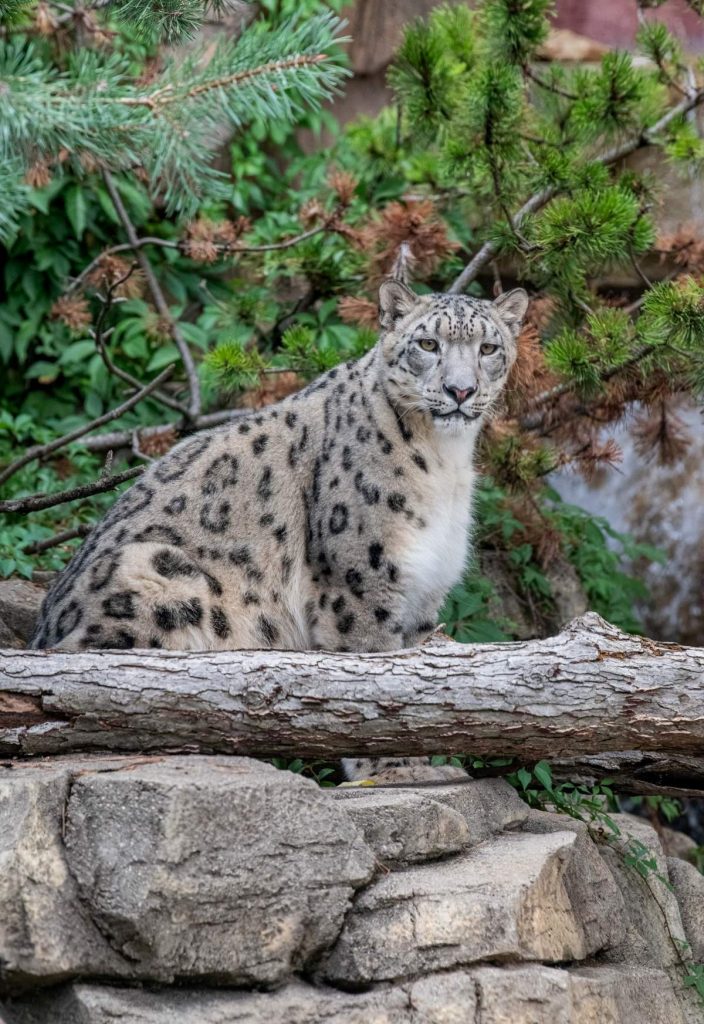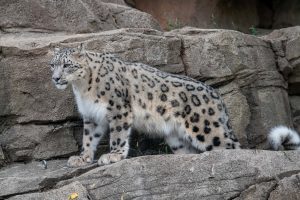
The Milwaukee County Zoo is excited to announce the public debut of a male snow leopard, Choto (show-toe), from the Dakota Zoo in Bismark, North Dakota. Choto is 2 years old and comes to the Milwaukee County Zoo with a breeding recommendation. The Zoo’s female snow leopard, Orya, arrived in 2016 and is 9 years old. Choto arrived in July and has completed a 30-day quarantine period — a standard procedure for MCZ’s incoming animals to ensure there are no health concerns.
Choto recently transferred from the Animal Health Center (AHC) to the Florence Mila Borchert Big Cat Country to get acclimated to his new habitat, holding areas located off exhibit, and the routines of the animal care staff. Keepers worked diligently to crate-train Choto for the move from the AHC to Big Cat Country, so the move was as stress-free as possible.
Zookeepers will monitor the snow leopards’ behaviors and watch for signs of interest in one another. Snow leopards are seasonal breeders — Choto and Orya will have about 4-5 opportunities to breed once Orya shows signs she’s comfortable and interested in Choto.
While Choto was in quarantine at the Zoo’s Animal Health Center, zookeepers were starting to get to know him and said his demeanor was very sweet and he was also quite vocal. Big Cat Keepers provided food for him at the AHC, to emphasize rapport and trust. 
Now that he’s at Big Cat Country, keepers say guests may notice Choto staying low to the ground, “blending in” while he learns to navigate the new habitat. The long, slinky movements are natural behaviors of snow leopards while they are investigating and learning. Much like humans, incoming animals need to learn how things work here, and can only communicate through body language.
So far, Choto is doing great in a short amount of time, having already learned to line-up with a zookeeper, the first behavior to allow for a blood draw, blood pressure check, and vaccination. He’s still becoming familiar with his new home, and his new companion, Orya. At times, it’s noticeable his ears pop back when he investigates something, until he understands it’s not concerning. Choto may also show an exaggerated flehmen response which is when he tastes things in his habitat to assess all the intricacies of his surroundings.
Choto was named after his former keeper at the Dakota Zoo. The name originates from the Nepal (part of snow leopards’ wild habitat) language meaning “shorty,” which was the keeper’s nickname.
Orya’s mother, Dshamilja, was born in the wild, so any of Orya’s offspring will be valuable, as the genetic lines from wild-born snow leopard lineage are considered under-represented in the snow leopard population currently living in AZA-accredited (Association of Zoos and Aquariums) zoos.
In the wild, snow leopards are found in the mountains of Central Asia, and while exact numbers are unknown, there may be no more than 6,390 left in the wild. Main threats include poaching, mining practices in the mountain ecosystems the animals rely on, and climate change. To help the plight of snow leopards, visit Snow Leopard Trust at snowleopard.org.
© 2024 Milwaukee County Zoo. All Rights Reserved | Privacy Policy